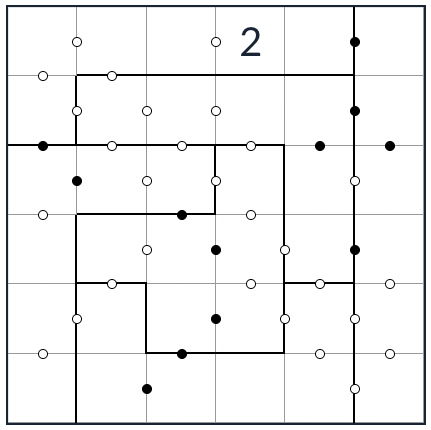Anti-King Diagonal Kropki Sudoku Easy
Latest score list for #317nr
Latest score list for Anti-King Diagonal Kropki Sudoku
How to play Anti-King Diagonal Kropki Sudoku
Anti-King Diagonal Kropki Sudoku Rules
Classic Sudoku Rules apply. Additionally, if the absolute difference between two digits in neighbouring cells equals 1, then they are separated by a white dot. If the digit is half of the digit in the neighbouring cell, then they are separated by a black dot. The dot between 1 and 2 can be either white or black.
Anti-King Diagonal Kropki Sudoku Additional Rules:
-
Anti-King Sudoku ("Touchless Sudoku") equal digits can be neither orthogonally nor diagonally adjacent.
-
Diagonal Sudoku Rule: Sudoku main diagonals also contain the digits 1 through 9.
A Kropki Sudoku puzzle consists of a standard Sudoku grid with the addition of either black or white circular markers between neighbouring pairs of squares. Black circles show all adjacent pairs of squares where the value in one square is double the other, while white circles show all pairs where one value is consecutive to the other. 'Consecutive' means that the numbers in the two squares have a numerical difference of '1'. For example: 2 and 3 are consecutive, as are 6 and 5.



























